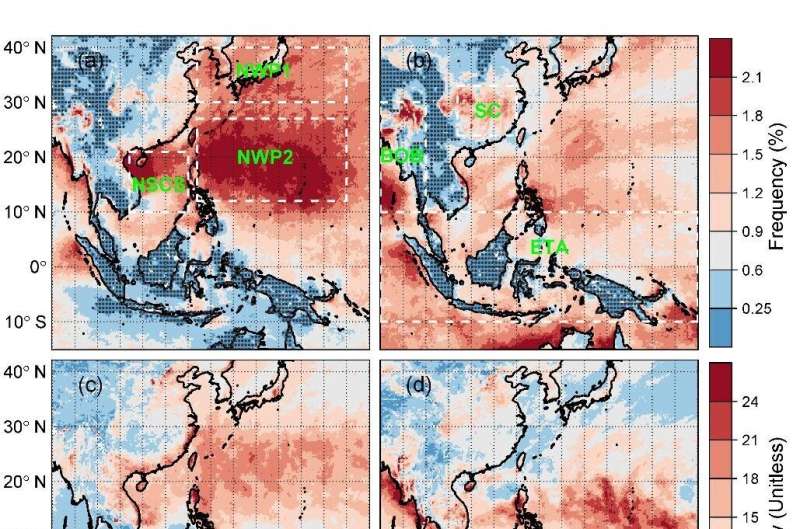What causes compound wind and precipitation extremes across the Indo-Pacific?

Co-occurrences of wind extremes and precipitation extremes, known as compound wind and precipitation extremes (CWPEs), can disrupt and endanger shipment and shipping logistics. The associated winds and floods may cause severe socio-economic impacts in coastal and inland areas.
The Indo-Pacific region is frequently subject to cyclones, atmospheric rivers, and convective weather systems, and it suffers from the resulting hydro-meteorological hazards. Therefore, the area is a potential hotspot as well as a good showcase for understanding mechanisms and drivers of compound events.
Recently, a research team led by Prof. Yin Baoshu from the Institute of Oceanology of the Chinese Academy of Sciences (IOCAS) has revealed the climatology, variability, and drivers of compound wind and precipitation extremes across the Indo-Pacific.
The study was published in Geophysical Research Letters on Jun 25.
The study reported the regional and synoptic weather system dependence of CWPEs. The northwestern Pacific Ocean and its adjacent sea areas see the most frequent, intense, and longest-lasting CWPEs in summer, which are mainly driven by cyclones, while atmospheric rivers are one of the main drivers for CWPEs in central and western inland China and northwestern Indo-China Peninsula. The equatorial tropical areas have the smallest chance of witnessing CWPEs, and these tropical events are mainly governed by some convective systems.
The long-term changes in the frequency of CWPEs show a spatially-mixed pattern. "Such a pattern for frequency changes is mainly determined by the spatially heterogeneous changes in the dependence structure between univariate wind and precipitation extremes across the region," said Dr. Li Delei, first author of the study.
"We initiated new measures of compound wind and precipitation extreme in terms of its frequency, intensity, and duration. The study is the first try to quantify the contributions of different weather systems to the climatological mean and long-term of CWPEs," said Prof. Yin.
More information: Delei Li et al, Compound wind and precipitation extremes across the Indo‐Pacific: Climatology, variability and drivers, Geophysical Research Letters (2022). DOI: 10.1029/2022GL098594
Journal information: Geophysical Research Letters
Provided by Chinese Academy of Sciences





















